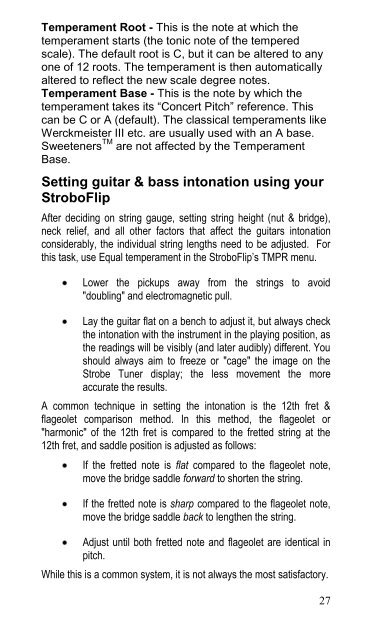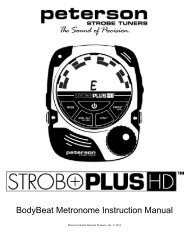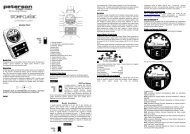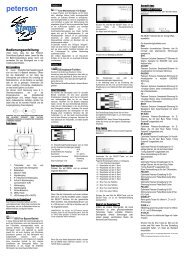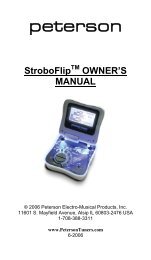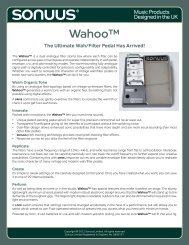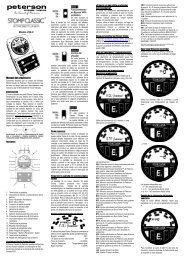Stroboflip Manual - Peterson Tuners
Stroboflip Manual - Peterson Tuners
Stroboflip Manual - Peterson Tuners
Create successful ePaper yourself
Turn your PDF publications into a flip-book with our unique Google optimized e-Paper software.
Temperament Root - This is the note at which the<br />
temperament starts (the tonic note of the tempered<br />
scale). The default root is C, but it can be altered to any<br />
one of 12 roots. The temperament is then automatically<br />
altered to reflect the new scale degree notes.<br />
Temperament Base - This is the note by which the<br />
temperament takes its “Concert Pitch” reference. This<br />
can be C or A (default). The classical temperaments like<br />
Werckmeister III etc. are usually used with an A base.<br />
Sweeteners TM are not affected by the Temperament<br />
Base.<br />
Setting guitar & bass intonation using your<br />
StroboFlip<br />
After deciding on string gauge, setting string height (nut & bridge),<br />
neck relief, and all other factors that affect the guitars intonation<br />
considerably, the individual string lengths need to be adjusted. For<br />
this task, use Equal temperament in the StroboFlip’s TMPR menu.<br />
Lower the pickups away from the strings to avoid<br />
"doubling" and electromagnetic pull.<br />
Lay the guitar flat on a bench to adjust it, but always check<br />
the intonation with the instrument in the playing position, as<br />
the readings will be visibly (and later audibly) different. You<br />
should always aim to freeze or "cage" the image on the<br />
Strobe Tuner display; the less movement the more<br />
accurate the results.<br />
A common technique in setting the intonation is the 12th fret &<br />
flageolet comparison method. In this method, the flageolet or<br />
"harmonic" of the 12th fret is compared to the fretted string at the<br />
12th fret, and saddle position is adjusted as follows:<br />
If the fretted note is flat compared to the flageolet note,<br />
move the bridge saddle forward to shorten the string.<br />
If the fretted note is sharp compared to the flageolet note,<br />
move the bridge saddle back to lengthen the string.<br />
Adjust until both fretted note and flageolet are identical in<br />
pitch.<br />
While this is a common system, it is not always the most satisfactory.<br />
27


